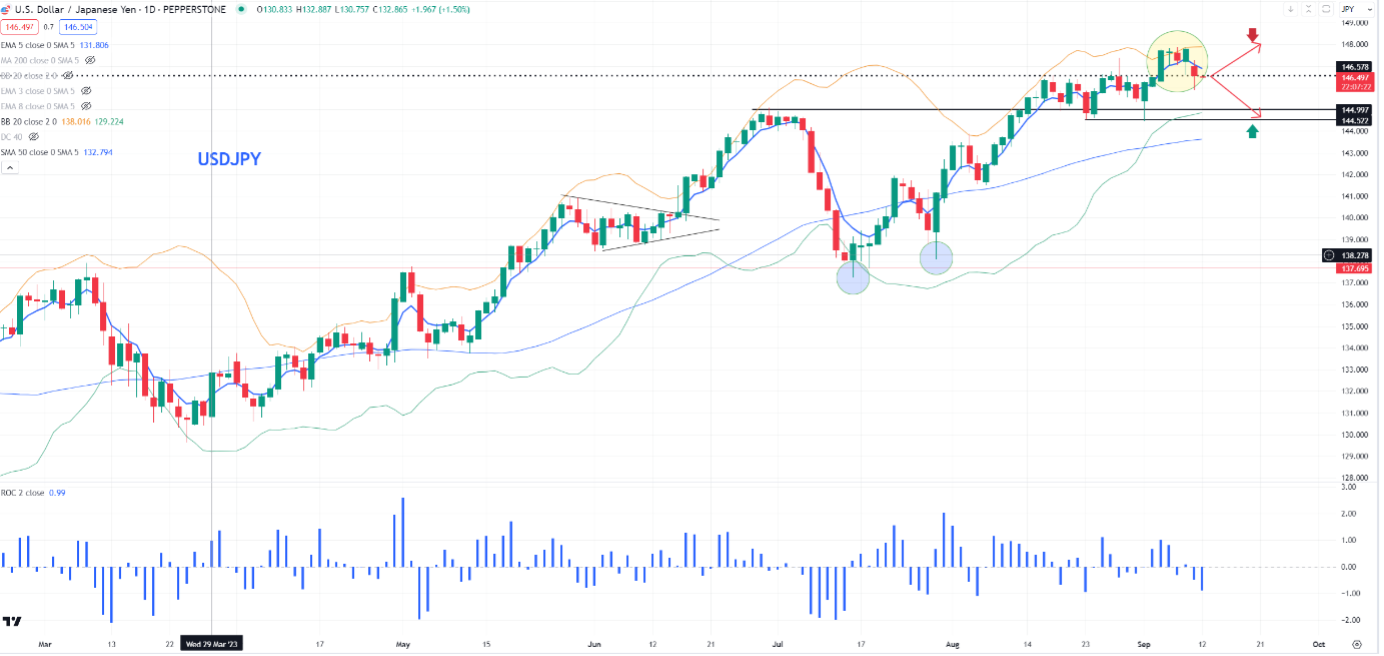分析
我们可以假设日本央行也距离放弃收益曲线控制(YCC)更近一步,从逻辑上可以认为,日本央行希望能够同时提高利率并取消YCC。
植田总裁讲话的结果是日本掉期和政府债券收益率急剧上升(日本政府5年期债券上涨6个基点至28个基点)。收益率上涨的动态迫使日本央行进行干预以限制抛售。USDJPY有所反应,交投升至145.90,但在整数关口之下找到了买家,截止撰写本文时,围绕此前146.56的突破高点波动。
我们的客户偏好相当微妙,虽然在日元方面净多头,但对于更明显的下行动态仍然持怀疑态度,USDJPY 59%的空仓仓位印证了这一点。这与快钱杠杆机构基金报告的日元仓位相符。
尽管植田的采访对于日元多头来说当然是有益的,但我在当前阶段对于我们听到的消息并不感到过于兴奋,这些行动更多是中期问题。工资是日本央行的核心考虑因素,但我们要等到2024年4月才能获得春季工资谈判的结果,而11月是我们可能看到早期估算结果的时间。所以实际上,这个重大的催化剂还需要一段时间才能看到,而且在大约六个月内不会有利率设定的变化,尽管市场总是活在未来,并会提前预期这些变化。
USDJPY 日线图

支持USDJPY回撤的外汇基金案例
短期的统计水平和隐含波动仍然非常低,而股市得到支持,进而继续推动了JPY融资的套利交易。市场正在争论美联储是否会在11月加息,而我们在美国CPI(周三 22:30 AEST)发布前夕,这一数据可能会影响对美联储是否会再次加息的预期,并影响美元。同时我们也可以认为,JGB(日本政府债券)收益率进一步上升不会导致日本养老金/保险基金大规模撤资和再配置到日本债券中,因为10年期JGB已经在进行货币套期保值的基础上超过美国10年期国债212个基点。
交易 USDJPY – 在区间内操作
考虑到这一点,战术上,我认为在短期内交易者最有可能寻求在区间内交易,在148上方卖出涨势,同时在144.50的区间低点提供支撑并买入回调。支持这一观点的是,USDJPY一周的隐含波动率为9.07%,相当于一周内上下波动152个点。如果美国CPI显著超出或低于共识,可以重新评估这一观点,但目前来看,进行区间交易似乎是最有可能的路径。
Related articles
Pepperstone不保证这里提供的材料准确、最新或完整,因此不应依赖这些信息。这些信息,无论来自第三方与否,不应被视为推荐;或者买卖的要约;或者购买或出售任何证券、金融产品或工具的邀约;或者参与任何特定的交易策略。它不考虑读者的财务状况或投资目标。我们建议阅读此内容的任何读者寻求自己的建议。未经Pepperstone批准,不得转载或重新分发这些信息。

_(1).jpg?height=420)